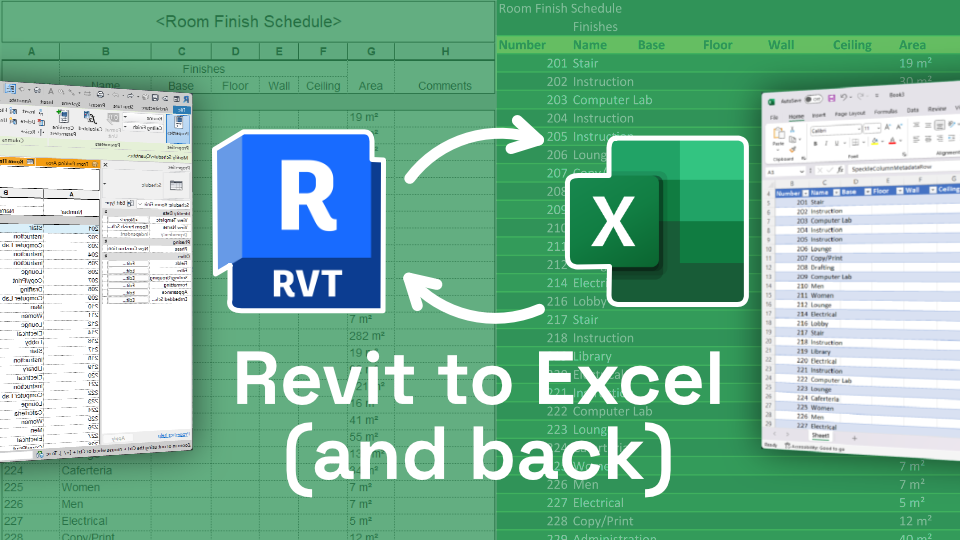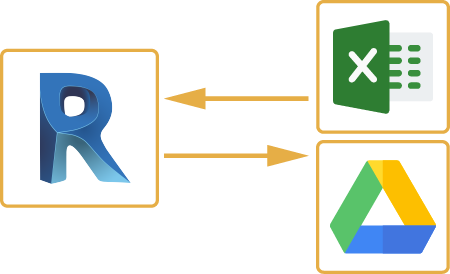Open New Opportunities with Ingenious Revit Plugins
Wiki Article
Revit Accelerator: Excel Assimilation Techniques for Enhancing Productivity and Collaboration
In this post, we will certainly explore the advantages of integrating Excel into your Revit operations. Plus, we will share ideal practices for effortlessly incorporating Excel into your Revit jobs. Obtain ready to supercharge your Revit experience with our Revit Accelerator: Excel Assimilation Techniques!Benefits of Excel Integration in Revit
The advantages of Excel combination in Revit are countless and can significantly enhance productivity and partnership. By flawlessly attaching these 2 effective devices, you can streamline your process and conserve useful time. With Excel assimilation, you can quickly import and export information between Revit and Excel, enabling you to utilize the toughness of both programs.
An additional advantage of Excel combination is the capability to develop dynamic schedules and reports. By linking your Revit model to an Excel spreadsheet, any adjustments made in Revit will instantly upgrade in the corresponding Excel documents. This makes it simple to create updated timetables, amount takeoffs, and various other project documents.
Excel combination in Revit likewise enables far better collaboration amongst employee. With the capability to import and export data, you can easily share information with colleagues that might not have accessibility to Revit. This promotes efficient communication and permits for far better control and decision-making.
Simplifying Workflows With Revit and Excel
Streamlining operations with Revit and Excel can significantly enhance performance and partnership. By combining the abilities of Revit and Excel, you can perfectly transfer data in between the 2 applications, getting rid of the requirement for manual information access and minimizing the danger of errors.
Using Revit and Excel with each other permits you to utilize the staminas of each program - revit plugins. You can export information from Revit into Excel, where you can carry out complex calculations, create charts and graphes, and analyze the info in a more reliable and well organized way. On the other hand, you can import information from Excel into Revit, allowing you to swiftly update your versions and paperwork based on modifications made in Excel
The integration of Revit and Excel additionally promotes collaboration amongst employee. By sharing Excel files, you can conveniently collaborate and connect on style and construction-related data. This boosts coordination and makes certain that everybody is dealing with the most current information.
Maximizing Partnership With Excel and Revit
To make best use of collaboration with Excel and Revit, you can effortlessly upgrade and share style and construction-related information with your team. By incorporating Excel with Revit, you can remove the requirement for hand-operated data entrance and lower the risk of errors. With simply a couple of clicks, you can import Excel spreadsheets right into your Revit version, allowing you to conveniently accessibility and adjust the data. This combination allows you to collaborate much more successfully with your group, as everyone can service the exact same information in real-time.One of the essential benefits of utilizing Excel in conjunction with Revit is the capability to upgrade information in both programs all at once. Any changes made in Excel will automatically be reflected in Revit, and vice versa. This guarantees that everybody is dealing with the most updated info, preventing confusion and saving important time.
Additionally, Excel offers powerful tools for analyzing and arranging information, which can substantially boost your partnership efforts. You can produce customized reports and charts in Excel, aiding you to picture and interact important job details efficiently. When presenting revit add ins information to stakeholders or making notified decisions based on task metrics (revit add ins)., this can be especially useful.
Advanced Methods for Boosting Performance in Revit Utilizing Excel
By utilizing innovative methods in Revit, you can considerably raise your efficiency by leveraging the power of Excel. With Revit's Excel assimilation feature, you can connect Excel spreadsheets directly to your Revit version, allowing you to quickly manage and update information.
Additionally, you can make use of Excel macros to automate repetitive tasks in Revit (import excel into revit). Macros allow you to tape a collection of actions and play them back with a single click, saving you time and initiative. You can develop a macro to immediately generate space routines or upgrade criterion worths in bulk.
Finest Practices for Excel Integration in Revit
Utilizing Excel as a data monitoring tool in Revit permits for effective management and upgrading of data. One of the ideal practices for Excel assimilation in Revit is to produce a clear and organized information structure. By adhering to these best techniques, you can efficiently utilize Excel as a data management device in Revit and increase your performance and collaboration.Final Thought
In verdict, incorporating Excel with Revit can substantially enhance performance and collaboration in the style procedure. By improving operations and maximizing cooperation, groups can work a lot more successfully and efficiently. Advanced methods, such as making use of Excel macros and formulas, can additionally boost productivity in Revit. It is important to follow finest methods to make certain smooth integration and avoid any prospective problems. By leveraging the power of Excel, Revit users can attain higher levels of performance and partnership in their tasks.With Excel combination, you can conveniently import and export information between Revit and Excel, enabling you to take advantage of the staminas of both programs.
One of the essential advantages of Excel integration is the capacity to make use of Excel solutions and functions within Revit. By linking your Revit model to an Excel spread sheet, any kind of adjustments made in Revit will instantly upgrade in the matching Excel file. On the other hand, you can import information from Excel right into Revit, enabling you to quickly upgrade your versions and paperwork based on changes made in Excel.
With Revit's Excel integration feature, you can connect Excel spread sheets directly to your Revit version, enabling you to quickly manage and upgrade data.
Report this wiki page